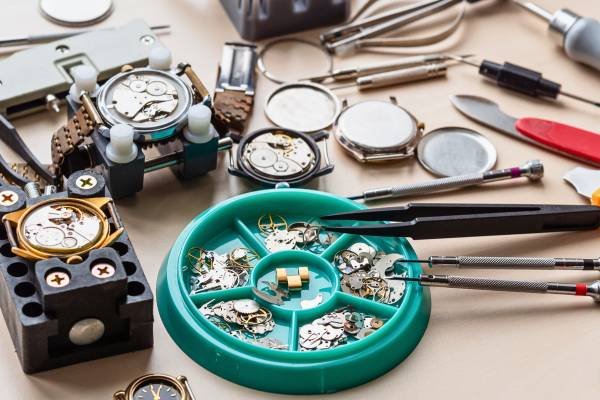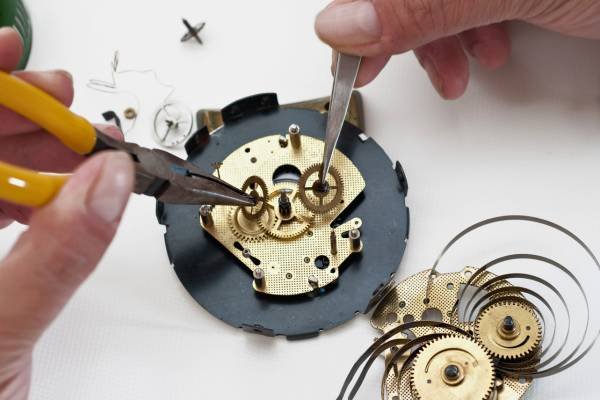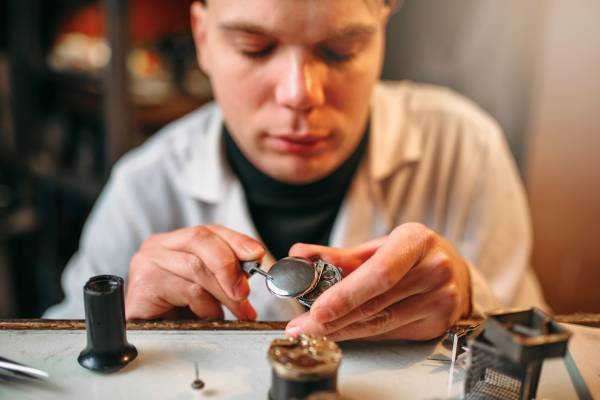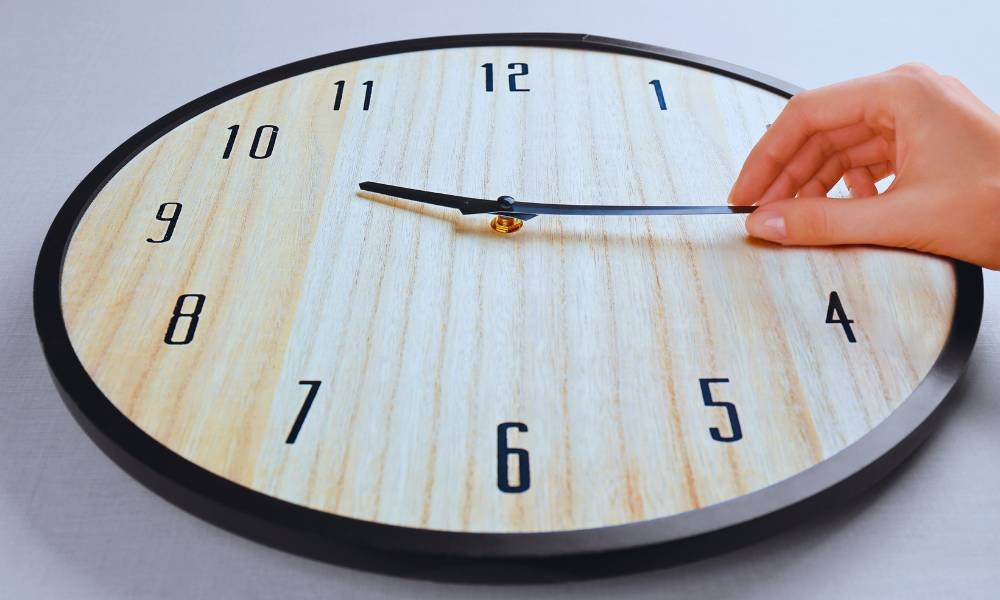Struggling with a clock that has loose hands can be both frustrating and disruptive to your daily routine. If you’re wondering how to fix a clock with loose hands, you’re not alone. This common issue can be easily resolved with the right tools and techniques. In this guide, we’ll walk you through a step-by-step process to securely adjust your clock hands, ensuring accurate timekeeping and restoring your clock to its full functionality. Whether you’re dealing with a vintage timepiece or a modern clock, our expert tips will help you achieve a precise and effective repair.
A step-by-step process: “How to Fix a Clock with Loose Hands?”
- Gather Tools: Get a small screwdriver, clock hand puller, tweezers, and cleaning cloth.
- Remove hands: Use a clock hand puller to carefully lift the hands off the clock face.
- Inspect Mechanism: Check the internal mechanism and mounting posts for damage.
- Check Hands: Ensure the hands are clean and aligned correctly.
- Reposition Hands: Align and press the hands back onto their posts.
- Test Clock: Move the hands to confirm smooth operation and no rubbing.
- Maintain: Clean the clock and apply oil if needed for ongoing smooth function.
Tools and Materials Needed

To fix a clock with loose hands, you’ll need a few essential tools and materials. Start with a small screwdriver to carefully disassemble the watch if needed. A clock hand puller is crucial for removing the hands without causing damage. Tweezers will help you handle small parts with precision. Keep a cleaning cloth on hand to wipe away any dust or debris. Additionally, you may require watch oil or lubricant to ensure smooth movement and prevent future issues. Having these tools and materials ready will make the repair process more efficient and effective, helping you restore your clock to proper working order.
Safety Precautions
When fixing a clock with loose hands, safety is crucial. Handle the clock gently to prevent any additional damage. Avoid applying excessive force, and support the watch from its base while working. For battery-operated or electric clocks, ensure the watch is powered off before starting repairs. Remove the battery or unplug the clock to avoid electrical hazards. Use insulated tools if necessary, and work in a clean, dry environment to protect the delicate components. Following these safety precautions will help ensure a successful repair and maintain the longevity of your watch .
Removing the Clock Hands
To fix a clock with loose hands, start by removing them carefully. Begin by gathering a small screwdriver, a clock hand puller, and tweezers. Gently use the watch hand puller to lift the hands off the watch face. Avoid using excessive force to avoid damaging the hands or the clock mechanism. If the hands are stubborn, use the tweezers to help ease them off. Ensure you work on a clean, flat surface to avoid losing any small parts. Following these steps will set you up for a successful repair, allowing you to reattach the hands securely and restore accurate timekeeping.
Inspecting the Clock Mechanism

To fix a clock with loose hands, start by inspecting the clock mechanism thoroughly. First, check the movement for any visible issues or damage, such as worn gears or loose components, that could affect its performance. Next, assess the condition of the clock hands and mounting posts. Ensure the hands are not bent or damaged and that the mounting posts are securely in place. A careful examination of these elements is crucial for identifying the root cause of the problem and ensuring a successful repair. Proper inspection will help you address the issue effectively and restore accurate timekeeping to your watch.
Repositioning and Securing the Clock Hands
To fix a clock with loose hands, proper alignment and secure placement are crucial. Start by carefully aligning the hour, minute, and second hands so they are centered on their respective posts. Ensure that each hand is not touching the others and is properly positioned over the watch face for accurate timekeeping. Once aligned, gently press the hands down to secure them, making sure they are tight but not overly compressed. Avoid overtightening, as this can damage the clock mechanism. Properly securing the hands will restore your clock’s functionality and ensure precise timekeeping. This step is essential for a reliable and well-functioning timepiece.
Testing the Clock
After reassembling your clock, it’s crucial to test its functionality to ensure accurate timekeeping. Start with an initial test by manually moving the hands through their full range of motion. Observe whether they move smoothly and without obstruction. Check for any sticking points or areas where the hands might rub against each other or the clock face. If issues are detected, make the necessary adjustments by gently repositioning the hands or tightening them if they remain loose. Perform multiple tests to confirm that the watch now keeps time accurately and operates smoothly. Regular testing and minor adjustments will help maintain the clock’s precision and longevity.
Cleaning and Maintenance

To ensure your clock with loose hands remains in top condition, regular cleaning and maintenance are essential. Start by gently wiping the clock face and hands with a soft, dry cloth to remove dust and debris. Use a small brush or compressed air to clean the internal mechanism, avoiding direct contact with delicate parts. For ongoing care, inspect the watch periodically for any signs of wear or damage, and apply a small amount of clock oil to the moving parts to keep them lubricated. Regular maintenance not only enhances accuracy but also extends the lifespan of your watch, ensuring it functions smoothly for years to come.
Troubleshooting Common Issues
If the clock hands remain loose despite following the repair steps, you may need to recheck the alignment and secure them more firmly. Ensure the mounting posts are not damaged or worn out, which can cause instability. If the hands continue to be loose, consider replacing the clock hands or seeking professional repair. Additionally, if you encounter other issues, such as a malfunctioning mechanism, inspect the internal gears for damage or misalignment. Lubricate the mechanism if necessary, and ensure all components are functioning correctly. Addressing these common issues promptly will help maintain accurate timekeeping and extend the lifespan of your clock.
FAQs for ‘’How to Fix a Clock With Loose Hands?’’
1. What tools are needed?
💥 A small screwdriver, a clock hand puller, tweezers, and a cleaning cloth.
2. How do I remove the clock hands?
💥 Use a clock hand puller to gently lift the hands off the face.
3. What if the hands are still loose?
💥 Check for damage or misalignment and secure the hands properly. Consider replacements if needed.
4. How do I test the hands?
💥Manually move them to ensure smooth operation without rubbing.
5. What if the mechanism is faulty?
💥 Inspect and lubricate the gears, and seek professional help if problems persist.
Conclusion
In conclusion, knowing how to fix a clock with loose hands is essential for maintaining accurate timekeeping and extending the life of your clock. By following the proper steps—gathering the right tools, removing and inspecting the hands, and securing them correctly—you can effectively resolve this common issue. Ensure the clock hands are aligned and functioning smoothly, and address any additional problems with the mechanism if necessary. Regular maintenance and timely repairs will keep your watch in top condition. For further assistance, don’t hesitate to consult a professional if the problem persists despite your best efforts.
